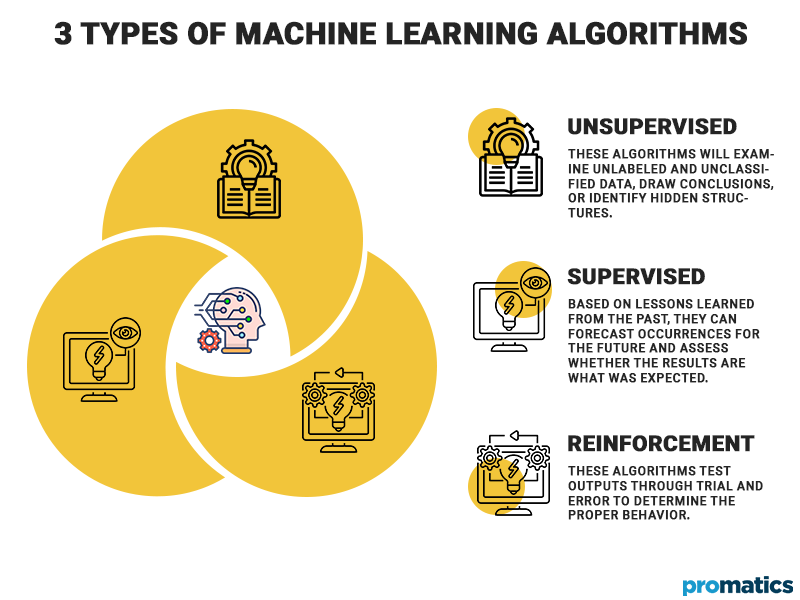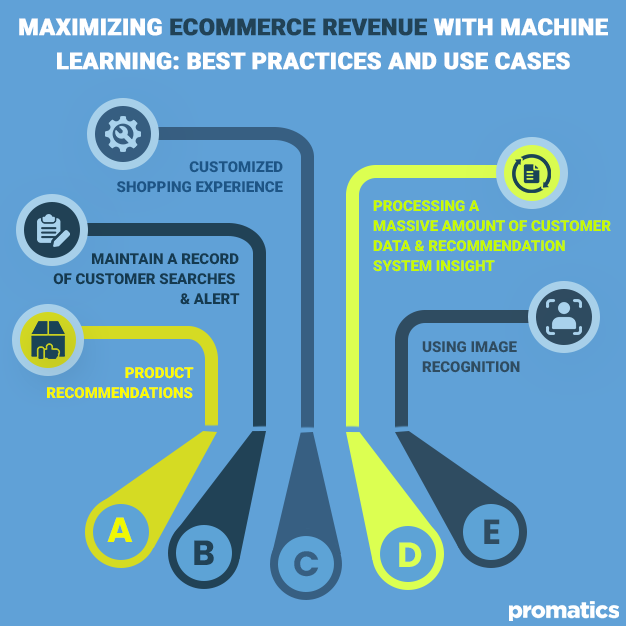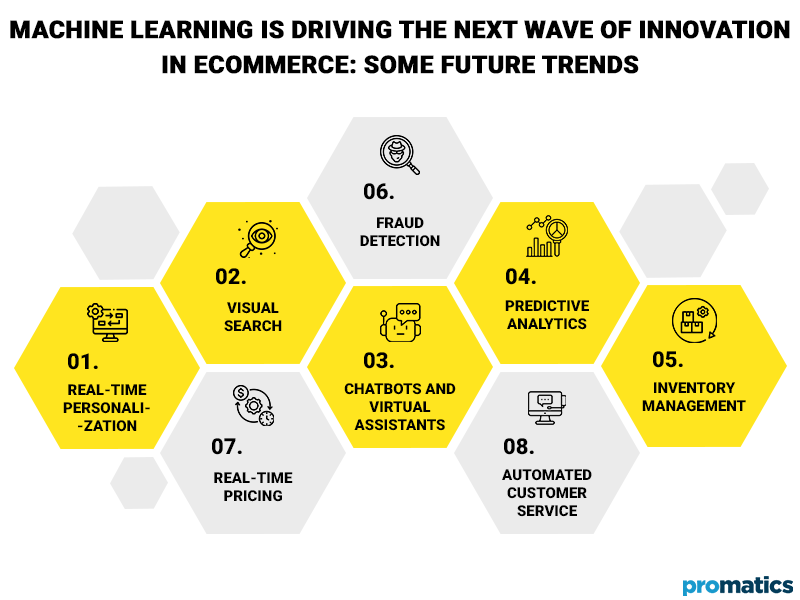The Future of Online Shopping: How Machine Learning is Changing Ecommerce
The future of online shopping relies on experts who can design a unique, enjoyable virtual shopping experience for customers. To suit the needs of today’s online buyers, those pursuing careers in business administration must utilize the newest digital technology and solutions. Since the development of the Internet, e-commerce has seen phenomenal growth. Due to the widespread use of smartphones, anyone may access online retailers and spend money to purchase necessities, even amid the Covid-19 pandemic. Diverse, customer-focused experiences will determine the direction of online purchasing in the future. Technological developments improve goods and services, encourage innovation, and enable us to accomplish more with fewer resources.
Machine learning is at the heart of many of the best solutions in web searches, picture identification, self-driving cars, and natural language processing. It now allows businesses to more accurately and quickly predict their customers’ requirements and wants, transforming how they conduct business. The e-commerce industry is expanding and will soon undergo a significant evolution. It significantly alters consumer behavior, demands, and shopping trends. In just 25 years, this industry has generated global revenues of more than 2 trillion US dollars. Let’s find out how machine learning is changing e-commerce.
What is machine learning?
Machine learning is a branch of data science and artificial intelligence based on learning algorithms. They can foresee future events without specifically being programmed for that situation beforehand. The portion of AI known as “machine learning,” which is comparable to the human brain, enables robots to learn and comprehend independently. Machine learning is used to gather data, process it, analyze it, and then generate ideas. There are three types of machine learning algorithms:
- Unsupervised: These algorithms will examine unlabeled and unclassified data, draw conclusions, or identify hidden structures.
- Supervised: Based on lessons learned from the past, they can forecast occurrences for the future and assess whether the results are what was expected.
- Reinforcement: These algorithms test outputs through trial and error to determine the proper behavior.
The development of graphics processing units has made it evident how machine learning can be accelerated. These processors enable algorithms to evaluate enormous amounts of data more quickly than in the past. Modern machine learning in eCommerce can comprehend complex data and make detailed and precise predictions based on the data gathered.
How Does Machine Learning Work In E-Commerce?
Radical changes in shopping preferences only happen occasionally. To change people’s routine behaviors, new technology is required. Machine learning is revolutionizing e-commerce and has the potential to boost your retail sales. What it is and how it might affect your future are described below.
Product recommendations
Retailers are adopting machine learning algorithms to enhance conversions on their e-commerce sites and suggest products to customers.
Customers trust internet merchants because they can see what other customers like them have bought, particularly when it comes to more expensive things like jewelry or gadgets.
The algorithm can generate recommendations if you provide data points about each item in your inventory and reviews from satisfied and dissatisfied consumers. You may also get your e-commerce solution equipped with potent capabilities that will automatically increase your sales spectrum if you engage machine learning professionals.
Maintain a record Of customer searches & alert
There will be many changes in the future, some of which have already arrived. Since we have AI assistants like Siri or Alexa, they can provide us with all the information we require. This sounds wonderful, but eventually, you finish shopping and need to find something to do. Naturally, these AIs can assist us there and give us options that may be enjoyable for us. When it comes to machine learning and its effect on e-commerce, not only does your experience improve and become more intelligent, but businesses are also starting to use their data in new ways.
Customized shopping experience
Currently, retail is more significant than ever throughout the evolution of e-commerce. Stores must be tricky to entice us to make a purchase, given that our devices can capture and convey vast amounts of data in real time. Companies may achieve this by using machine learning techniques, which are part of artificial intelligence, to provide clients with a distinctive shopping experience catered to their preferences.
Processing a massive amount Of customer data & recommendation system insight
Many websites and apps make use of recommendation algorithms. For instance, let’s say you are looking at outfits online. Based on what you’ve previously looked at and whether other customers who purchased those dresses also looked at skirts, these systems will attempt to anticipate your interest. Or even in light of your prior purchasing habits, information from your Facebook likes, or previous Google searches.
Using Image Recognition
Retailers can forecast customer behavior, and consumers will receive a better online shopping experience thanks to machine learning.
One major difficulty stems from the expansion of e-commerce:
- To give clients a never-ending range of product options, making it challenging for consumers to choose what they want.
- With millions of things at their disposal, it is simple for consumers to feel overawed by the variety.
Image recognition technology is used to overcome these problems and provide customers with more individualized options. They use digital signage or personalized pop-up advertising based on images from social media or websites like Google Image Search to do this.
Augmented reality and e-commerce
The customer can have a better sensory experience and an idea of what to expect with their goods while purchasing online with the aid of interactive visual design such as virtual reality, augmented reality, and 3D imaging. Geotagging will soon be greatly enhanced by trends like augmented reality, which lets you overlay graphics on top of the real world (think of Instagram’s AR effects). You could use your phone to obtain personalized video demonstrations of things from holographic digital avatars developed to serve as your assistant, or you might aim your camera at a car you’re thinking about buying and receive information about the make and model.
Exploring the Upcoming Machine Learning Trends in Ecommerce
a.) Real-time personalization: Ecommerce websites are using machine learning to personalize the shopping experience for customers in real-time, by providing personalized product recommendations and offers based on browsing and purchase history.
b.) Visual search: Machine learning-powered visual search technology is becoming increasingly popular among ecommerce websites, allowing customers to search for products by uploading an image or taking a picture of an item.
c.) Chatbots and virtual assistants: Machine learning is being used to create more advanced chatbots and virtual assistants for ecommerce websites, which can understand natural language and provide personalized assistance to customers.
d.) Predictive analytics: Machine learning is being used to analyze customer data and make predictions about their behavior, such as their likelihood of making a purchase or their preferences for certain products.
e.) Inventory management: Machine learning is being used to optimize inventory management for ecommerce websites, by forecasting demand and predicting sales trends.
f.) Fraud detection: Machine learning algorithms are being used to detect and prevent fraud on ecommerce websites by analyzing patterns in customer data and identifying unusual behavior.
g.) Real-time pricing: Machine learning is being used to adjust pricing in real-time based on factors such as demand, competitors prices, and inventory levels.
h.) Automated customer service: Machine learning is increasingly used to provide automated customer service, by analyzing customer queries, feedback and sentiment and providing personalized assistance.
Future Stats for Ecommerce Industry
Let’s look at the statistics that illustrate the potential future development of the eCommerce sector in 2023 and beyond.
- Online shops with active social media presence often generate 32% more revenue than those without.
- 52% of eCommerce companies, on average, have omnichannel capabilities.
- Nearly 95% of all purchases will be made online by 2040.
- Within the next few years, the UK is expected to grow by $85.7 billion (+42.88%) constantly.
- With a projected 25.5% increase in sales by 2022, the Indian eCommerce sector is among the world’s top 5 fastest expanding economies.
These statistics also reveal a great deal about significant shifts in consumer behavior that will last through 2023 and beyond. By considering this number, online consumers should adjust their business tactics. The risk of collapse is very great otherwise.
Conclusion
The numerous advantages that machine learning in online purchasing provides are significant and diverse. Businesses will prosper, from improved promotion to day-to-day work optimization. Companies that operate online are showing increasing interest in adopting machine learning to improve internal processes and the consumer experience. Their increasing utilization has yet to see a stop sign, and if you can’t keep up with the trend and behave appropriately, you’ll undoubtedly fall behind.
Still have your concerns?
Your concerns are legit, and we know how to deal with them. Hook us up for a discussion, no strings attached, and we will show how we can add value to your operations!



